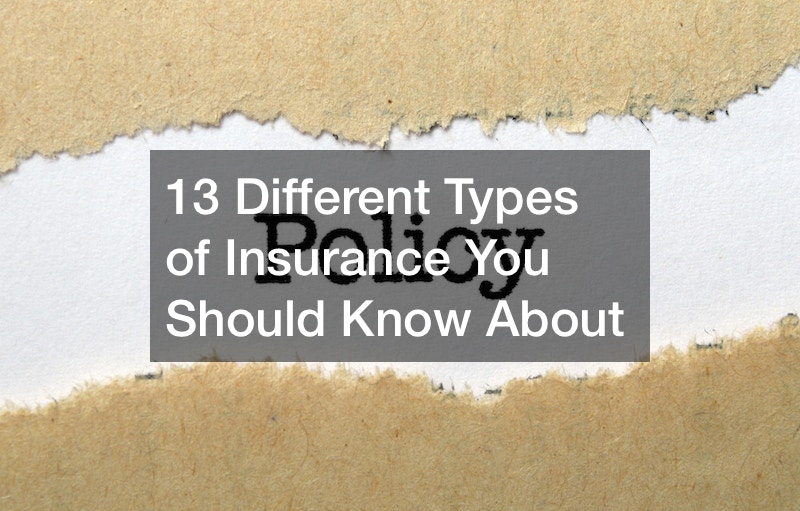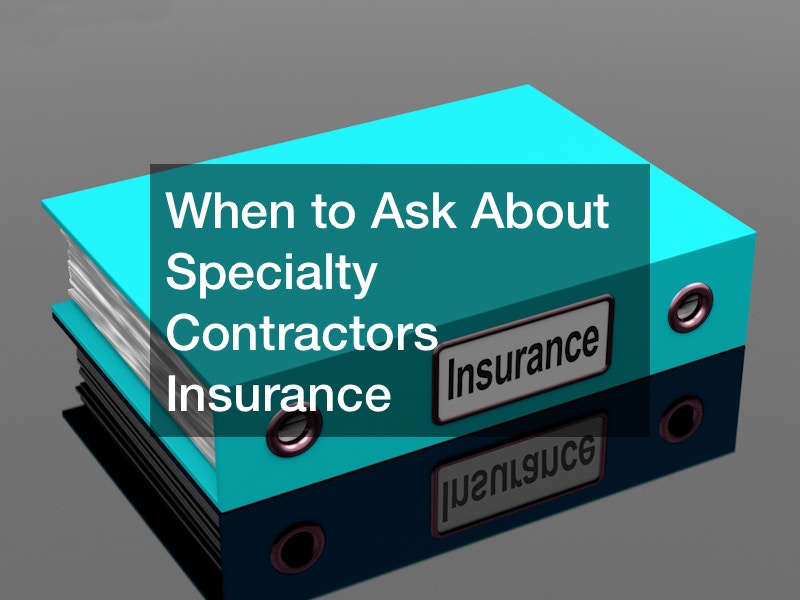
When you read about insurance you must have, the article typically focuses on one type of insurance. Today, though, we’ll look at a wide array of options that most adults will need during the course of their lifetime. You don’t have to subscribe to Insurance magazine, like an insurance industry insider to know which policies you need to purchase to protect your financial wellbeing.
1. Homeowners

During the process of purchasing a home, you’ll need to buy a homeowner insurance policy if you apply for a mortgage. Banks and credit unions require this insurance to reduce their financial risk in offering you a loan. You’ve got tons of options when it comes to homeowner’s policies, each covering a different number of perils, meaning events that activate the insurance.
HO-1: The most essential policy, an HO-1, offers the least in perils protection. It typically covers 10 to 11 perils, each of which gets named specifically in the policy documents. If the policy does not list the peril, the insurance does not cover it.
HO-2: The HO-2 policy adds a few more perils to its list, but this named-peril policy also only covers those types of events specifically named. For example, if your policy documents list earthquake as a named peril, then your home receives coverage in the event of an earthquake.
HO-3: Insurance agents typically recommend this homeowner’s policy coverage level because instead of naming perils, it covers all perils. All perils coverage means that no matter what happens, your policy covers it. The random asteroid striking a home during a snowstorm gets the same coverage as a house fire.
HO-8: This specialized type of homeowner’s insurance only applies to historical homes and homes of architectural value. A named peril policy, it covers the same perils as an HO-1 policy.
Essentially, you work with your insurance agent to determine which coverage level best suits your financial needs and home. The best option covers all typical perils in your area and your liability. Most policies provide a limited amount of coverage for detached structures on the same property, such as a detached garage, or a she shed.
The category of homeowners insurance also offers a number of add-ons and riders that you can have added to your policy. This includes jewelry coverage and riders for operating a business from home.
2. Renter’s
Not everyone owns a home. Some individuals rent one. They also have insurance options. A renter’s insurance policy covers the individual’s personal belongings and liability inside their rented apartment, condo, or home. The policy does not cover damage to the abode itself, since their landlord’s policy covers that.
You can purchase a renter’s insurance policy for more than a home. Any type of rental can receive coverage under a renter’s policy. For example, if you rent a storage unit, purchase a renter’s policy to cover the items within it.
3. Condo
Purchasing a condo means you need home coverage, but not the same type as the owner of a single-family home. Just as renter’s insurance limits what it covers, so does condo insurance. Because a condo shares walls and other structural pieces with a larger building, a policyholder’s policy only needs to cover what the individual keeps inside it and the interior structure. That’s why they call it a ‘walls in’ policy in the insurance industry.
A condo policy covers damage to the interior of the condo and the owner’s personal belongings. If the condo owner had guests staying with them at the time of the peril event, their belongings also received coverage. Condo policies provide liability coverage, too.
4. Mobile Home

Because of their structural differences from single-family homes, mobile homes get their own policy type. The policy text specifies the aspects of the structure covered. These policies may offer perils coverage in the range of an HO1 to HO3, but most offer the same number as an HO3.
5. Tiny House
The advent of the tiny house phenomenon during the past decade has brought about the creation of a new form of home insurance. Tiny house policies cover homes consisting of 400 square feet or fewer. These seemingly minute homes use architectural features like lofts, foldout beds and tables, and modular walls to increase utility while maintaining structural integrity. Although small in square footage, they offer the same typical rooms found in a larger home, so the insurance policy offers the same coverage as in the HO1 to HO3 range.
Home insurance had been created for larger dwellings though in line with the building codes of its time. Now, with building codes amended, homeowners have turned to smaller homes, and insurance caught up. Even billionaire Elon Musk built a tiny house; it’s his main home on the Texas campus of his companies, Tesla and SpaceX.
6. Auto
Just like homes, no matter what kind of vehicle you drive, you’ll need to insure it. In the U.S., every state requires automotive insurance by law if you want to drive on their streets. The states only require liability coverage, so if you cause an accident, your insurance covers the other party’s repairs and medical bills.
To cover your own vehicle, you’ll need to purchase comprehensive and collision coverages. This coverage ensures that you can take your vehicle damaged in a covered peril or accident to any auto body repair shop and the insurance company will cover the repairs up to your policy’s limits. Your insurance company may require you to obtain quotes from multiple auto shops or auto collision services. You’ll typically need at least three quotes for the insurance company to go ahead with the reimbursement for repairs.
7. Boat

In some home policies, items like recreational vehicles, such as ATVs and boats, receive a tiny smidgen of coverage. This equals about 10 to 15 percent of the home value named in the policy. To fully cover your boat, obtain a boat policy, which covers modifications like boat detailing that add value to your vessel. Boat policies include liability coverage similar to that of an auto policy, so if you cause an accident on or off the water with your boat, you won’t pay out of pocket for it.
Like most insurance policy types, you can add riders to a boat policy that ensures the policy covers everything on the boat and the vessel itself. This policy can include specialized coverage for expensive equipment like radar, sonar, and photography paraphernalia. Ask your insurance agent what the agency offers.
8. Medical
Most businesses now provide their employees with medical insurance under U.S. law. Only the smallest companies with only one or two employees escape this requirement. That makes it rare that people need to purchase their own coverage, but some do. By buying their own policy, these people get to choose what gets covered because many group plans don’t cover marijuana doctor services, despite recent changes in U.S. laws to legalize THC medications and other treatments using marijuana.
In the U.S., it’s perfectly legal to purchase supplementary insurance. That means you can buy a personal medical policy to go with your employer’s group policy. Buying your own policy lets you shop around for coverage that includes cosmetic procedures like Coolsculpting clinics.
Once an individual reaches their 60s in the U.S., they qualify for Medicare. The Medicare website explains the election process, which refers to choosing the level of Medicare coverage the individual desires. The government provides free coverage for hospitalization, but the individual must pay for coverage of a higher level, such as doctor visits and prescription drug coverage. Medicare now features nearly 20 parts, but when it began, only Parts A (hospitalization), B (day-to-day medical care), and D (drug coverage) existed. Part C refers to an all-coverage plan that includes A, B, and D.
9. Vision

Most medical policies do not include coverage for vision needs, so individuals shop around for insurance policies that cover their annual eye exams and all or part of any needed corrective lens. This lens could include glasses or contact lenses. Some vision plans offer a wider range of eye doctors office options; choose carefully.
Another variation of policies extends to surgical coverage. Not all policies cover surgeries for items such as corneal implants, laser vision correction, etc. Shop for vision policies with your family’s medical history in mind, prioritizing policies that cover surgery if diabetes, macular degeneration, or another medical issue runs in your family.
10. Dental
Just as most medical policies don’t cover vision, they don’t cover dental needs either. That leaves each individual to determine if they need to purchase a separate dental policy. Most of these insurance policies cover annual exams and dental cleanings. Rarer policies offer coverage for items like bridgework or dental implants.
Some dental coverage pays for dentures, but this also varies by policy. When choosing supplemental medical policies to cover dental needs, consult your insurance agent. They can help you search through coverage specifics, so you know ahead of time that it includes treatment for tooth loss, including a form of replacing the teeth.
11. Disability
Many types of disability insurance exist. From long-term care to temporary disability insurance, these options help pay for hospitalization and medical care related to a temporary or permanent disability. They don’t help pay for disability attorneys, but most of these lawyers work on a contingency basis, meaning that they draw their pay from any settlement you receive.
If employed and the disability arose from a workplace injury or illness, workers’ compensation insurance kicks in first. The individual doesn’t purchase a policy for this type of coverage. It comes through the workplace, so a person’s premiums for it come from their pay. Check your paystubs for a pre-tax deduction that covers your monthly premiums.
Once your workers’ comp pays out, you’ll have recovered as fully as possible. It pays for immediate medical care needs and rehabilitative care. What it does not cover, is long-term care after rehab, other types of insurance do. If you aren’t employed or did not incur your disabling event at work, only a personal insurance policy covers your care needs.
12. Life
Life insurance provides a financial disbursement to your beneficiary in the event of your death. You name the beneficiary and choose the level of coverage. For example, you could name your spouse as the beneficiary on a $100,000 policy or your two children as beneficiaries on a $1 million policy. The latter would result in each child receiving $500,000.
The flexibility of life insurance means that you could purchase many policies, each one with a different beneficiary, or one policy with many beneficiaries named. This lets you shop around to find the most reasonable premium cost. It also enables a person to purchase many different types of life insurance, such as a whole life cash account policy and a burial policy.
13. Umbrella
Here’s a favorite policy type of every insurance blog because so few people know what it does. An umbrella policy provides the policyholder with extra liability coverage. Known as a secondary policy, the policyholder must already own a primary policy that includes liability coverage. Examples of a primary policy include home, auto, or boat policies.
If you know that you’re at risk for liability, such as a sports coach or community leader who often entertains at their home, you first maximize the amount of liability coverage available to you on your primary policy. Purchase the secondary umbrella policy. If an event occurs that accesses your liability coverage, your primary policy pays out first then your umbrella policy takes over, so you don’t typically need to pay out of pocket for anything.
Shopping for Insurance Coverage
The insurance industry provides a policy type for every kind of event or life stage. Contact an insurance agent to pursue the various options open to you. Also, ask about insurance for commercial/business purposes. This article only covers personal insurance needs. Commercial insurance covers more than 25 separate needs of businesses.



